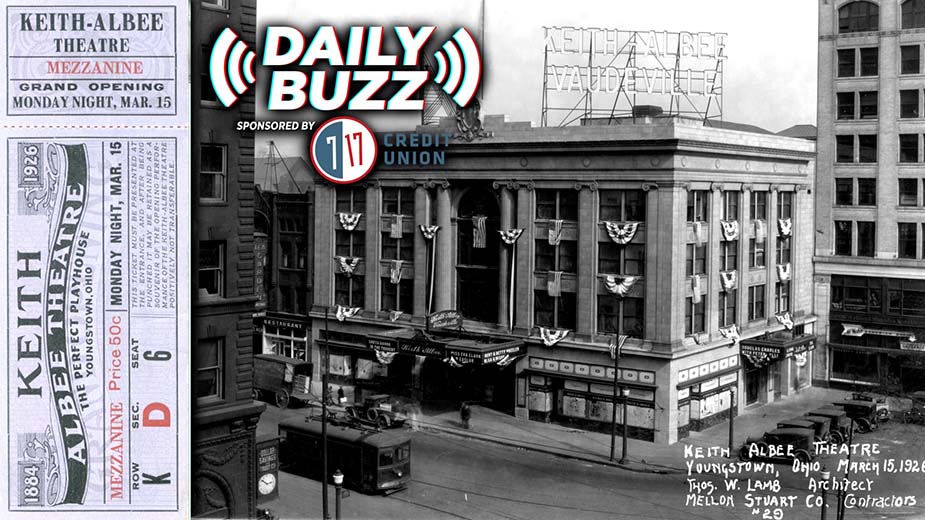Drunk Mayors, Poisoned Cows: Lowellville’s Colorful History
YOUNGSTOWN, Ohio – In July 1914, a Lowellville resident was brought before Mayor Robert Erskine on charges of poisoning his neighbor’s favorite cow. The families were longtime neighbors and friends, but it became a tumultuous relationship and an eventual summer in prison.
Local history author Roslyn Torella depicted odd stories like this in her book “Lowellville, Ohio: Murders, Mayhem and More.” She shared tales of debauchery during a Mahoning Valley Historical Society’s Bites and Bits presentation, which shared her book’s name.
“The history I uncovered really stuck with me,” Torella said. “It was about my home, my people and I just couldn’t get enough of it.”
Torella was born and raised in Lowellville, where she heard stories passed down by family members. After becoming a genealogist, she published her book in 2014, which retold the criminal and chaotic history of the riverside town.
The most notable stories came in 1913.
One story detailed the murder of 22-year-old Mary Sigmund by her jealous fiancé, John Logar. Sigmund called off their engagement, leading to an altercation before law enforcement intervened. That day, Logar purchased a gun and shot Sigmund. She died two weeks later and Logar was sentenced to life in prison.
Also in 1913, two Baltimore-Ohio railroad workers were discovered in a blood-soaked boxcar. The workers were sent to repair the railroad after the 1913 flood and used the boxcars for housing. The two Polish workers killed each other in an alcohol-induced altercation with a tool found at the scene.
“The New Castle News described it as, ‘the foulest crime to ever occur in this vicinity,’” Torella said.
Not every story was filled with gore. Most were less severe but alcohol was still a factor. Lowellville was filled with alcoholism, theft and violence in the early 20th century. In 1913, 1,600 arrests were made – in the town of 2,000 residents – with many due to public intoxication and pick ocketing.
Nearby Struthers and Lawrence County, Pa., were dry at the time. Lowellville residents, sandwiched between the two, became tired of the alcohol-fueled shenanigans and tried to become a dry town in the 1890s. Their attempts were unsuccessful until the enacting of the 18th Amendment in 1920.
Former Mayor John Shannon Roller, who served in the early 1910s, didn’t favor dry legislation since he spent his free time drinking. Roller escaped charges of misconduct in office, which were filed by the Lowellville Council.
“[Erskine] became mayor in 1914, and by the following year, he had had enough of the town drunks, including – believe it or not – former Mayor Roller,” Torella said.
After his failed re-election attempt, Roller was arrested in 1915 among “drunks and loafers” that gathered in front of Lowellville’s City Hall every morning.
Torella discussed the 1904 Lowellville Street Fair. The street fair incorporated the entire town as they hung lights and banners, cooked food and hired attractions to entertain thousands of guests.
According to Torella, the streets were filled with bands, sword swallowers, high-wire walkers, jugglers and more. Dancing, alcohol and gambling flooded Water Street, but the businessmen funding the fair lost money by not charging for entertainment.
“Every time I find another story, I’m amazed that such a small village could have so much history,” Torella said.
Bill Lawson, executive director of the Mahoning Valley Historical Society, said a virtual tour of the upper portion of Fifth Avenue will premiere on July 25. The tour will take viewers between Tod Avenue and Gypsy Lane.
Traci Manning, the historical society’s curator of education, will present “Shall Not Be Denied” on Aug. 20. The upcoming Bites and Bits presentation will focus on the women’s suffrage movement.
Pictured: A historic photograph gives a bird’s eye view of Lowellville.
Copyright 2024 The Business Journal, Youngstown, Ohio.


